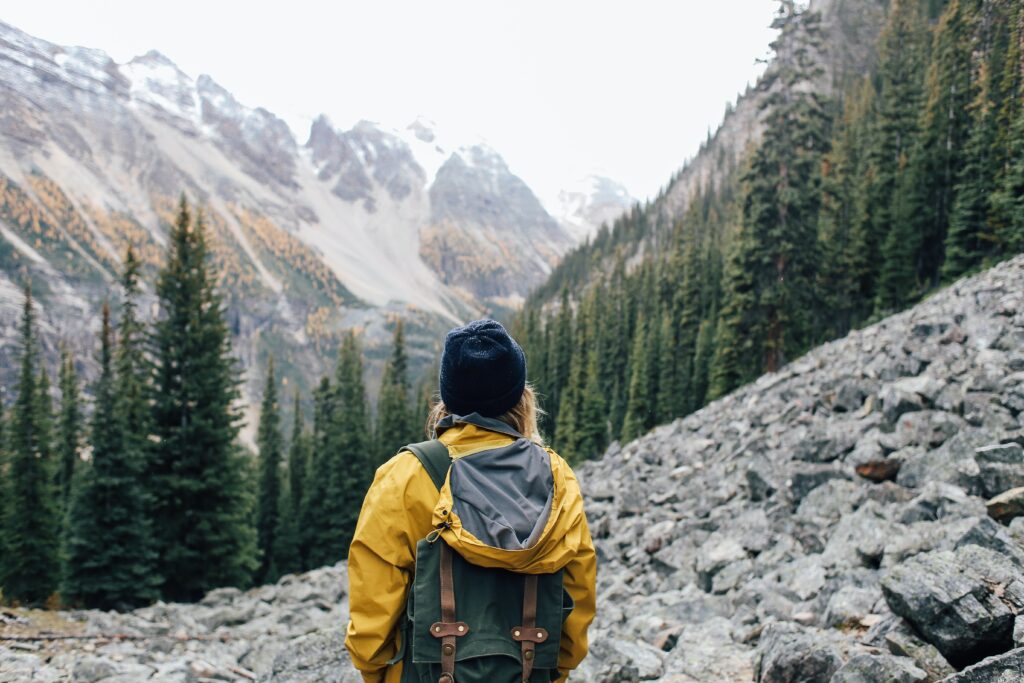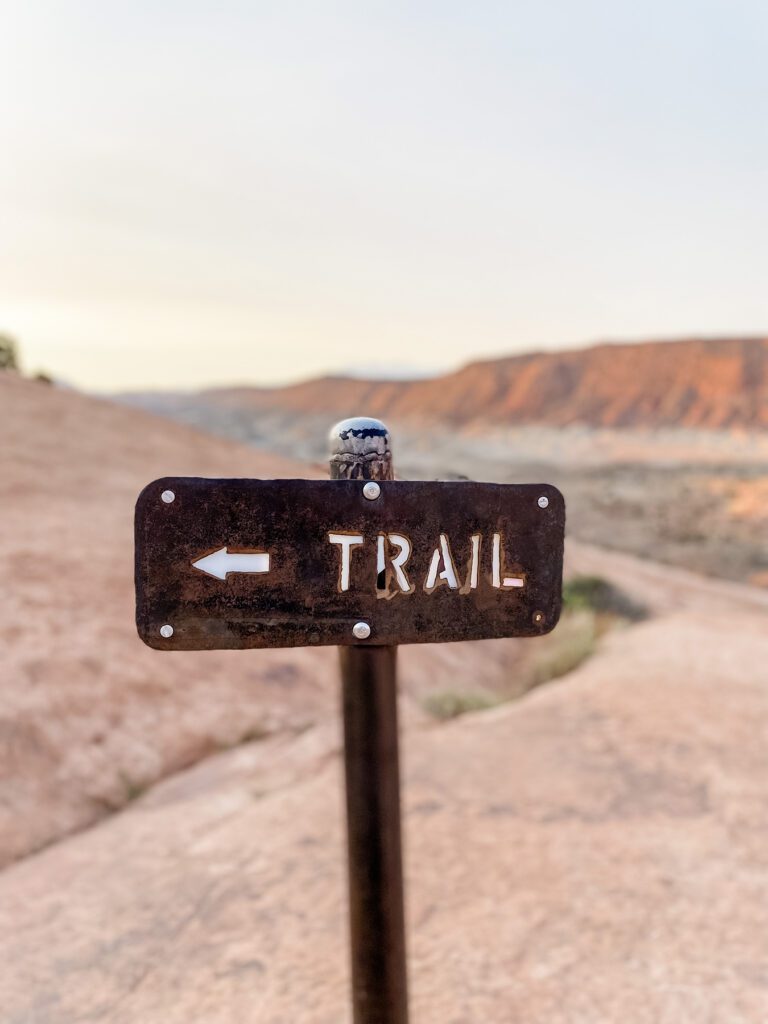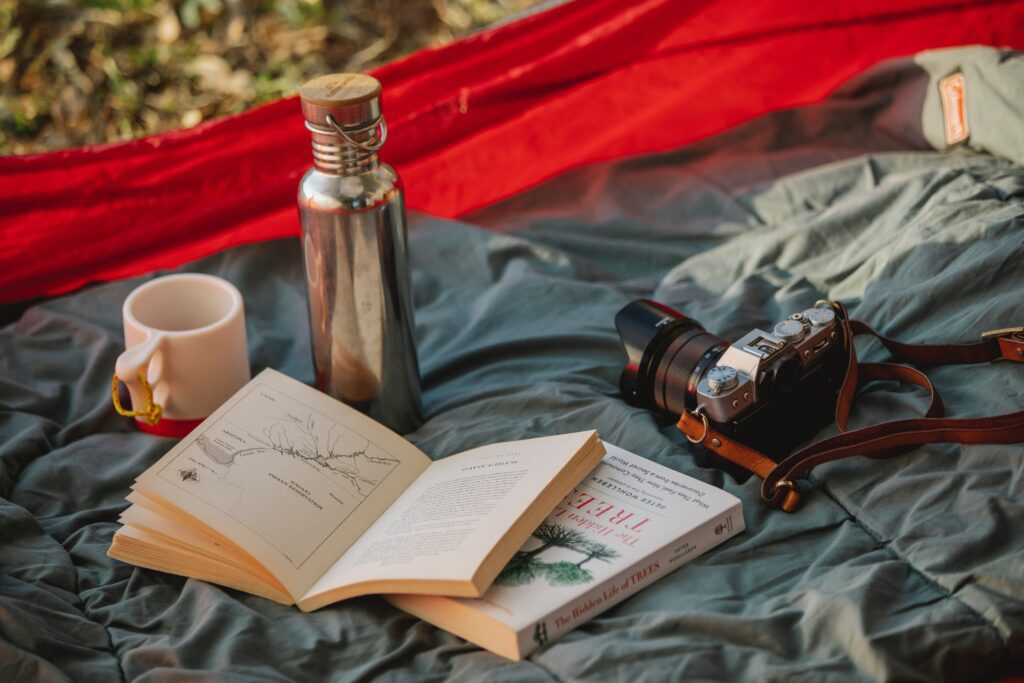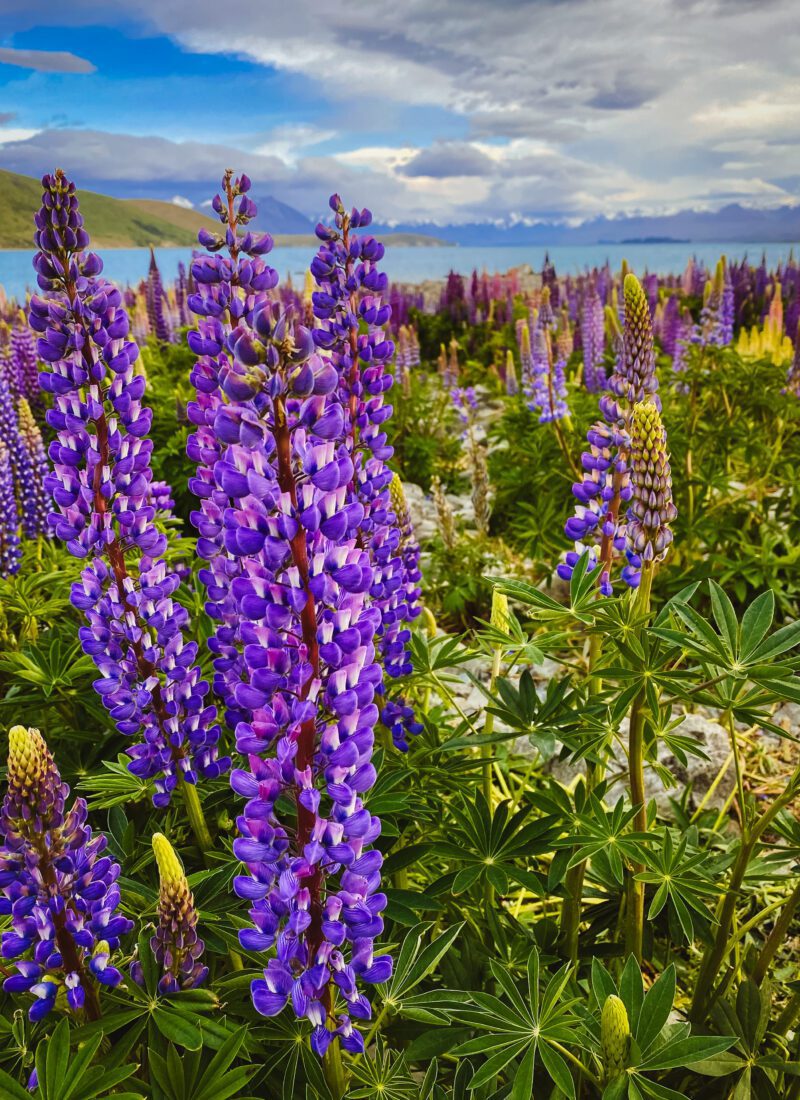
Preparation is key when embarking on a hike of any length. There’s nothing worse than getting halfway through your trek and realizing you don’t have enough water, food, or proper first aid items. In a worst-case scenario, being unprepared could lead to you feeling uncomfortable, getting lost, or injured. Thankfully, with a bit of preparation and knowledge, you will have a safe and enjoyable adventure in the great outdoors. With the help of my complete hiking packing list post listed below, you’ll be ready to embark on your next journey.
As an added bonus, I’ve created a digital hiking packing list that you can download for free!
This post contains affiliate links, and I may earn a small commission when you click on the links at no cost to you.

Ten Essentials
If you have researched hiking packing list essentials in the past, you might be familiar with the Hiking Ten Essentials. The original Ten Essentials list was created in the 1930s by a Seattle-based organization called The Mountaineers. The list was designed to help prepare people for various situations they face in the outdoors while on day hikes or longer treks in the backcountry. It’s evolved over the years into buckets of items or “systems” instead of specific items. I have included each system below with some recommended items we utilize during our outdoor adventures.
Navigation
First up on the complete hiking packing list is navigation. Navigating around the great outdoors is pretty important, and getting lost could evolve into a dangerous situation. You can fulfill this system by carrying a physical map, compass, or GPS device on your person at all times. When you’re on the trail, follow the path and keep an eye out for the trail markers to minimize your chances of getting off track. You can also utilize the AllTrails app by downloading the trail information for offline usage as another layer of protection.

Sun Protection
Sunshine can elevate a hiking adventure into a magical experience. Witnessing a sunrise, golden hour, or a beautiful sunny day on the trails can quickly become an unforgettable core memory. While the sun brightens up your adventure (pun intended), it can also become dangerous if you’re unprepared. This is why packing appropriate sun protection is essential for a safe journey. Plus, no one wants an uncomfortable sunburn that would damper your excursion. Depending on where and when you’re traveling, you can pack sunglasses, sun-protective clothes, a hat, and sunscreen. If you’re hiking in balmy temperatures, check out my hot weather hiking tips post for more information on staying comfortable during those adventures.
Hydration
Hydration is critical to staying safe during any hike, regardless of the distance, temperature, or season. A good rule of thumb is to drink one half-liter of water per hour during moderate activities in moderate temperatures. If you’re hiking in more extreme temperatures or intense treks, this will need to be increased. It’s essential to store your water in an insulated water bottle to keep the water chilled while hiking. You could also consider hiking with a hydration pack and an additional water reservoir to ensure you have additional water if needed. As of late, Bill and I pack an extra water bottle and fill it with Liquid IV to increase our electrolyte intake while we hike.
Insulation
Let’s face it; mother nature can be unpredictable. The weather can shift, and you could suddenly be facing rain, snow, wind, or cold temperatures at the drop of a hat. Therefore, packing extra clothing is crucial to your hiking packing list. Depending on the weather and distance of your hike, you may want to consider packing an extra top layer, bottom layer, socks, or additional gear such as a rain jacket. I recommend throwing in a few plastic bags to avoid stinking up your pack if you need to store any worn clothing items.
If you need a comprehensive packing list for all your travel needs, I’ve got you covered! I created the ultimate packing list for your upcoming adventures, including carry-on essentials, toiletries, clothing, and location-specific items.

Illumination
Even if you don’t intend to hike after the sun goes down, it’s always best to plan if your trek takes longer than initially anticipated. Getting stuck in the dark without a flashlight or headlamp would be a terrible way to end your journey. I recommend packing a headlamp, so you have free hands, plus an extra set of batteries. While your phone’s flashlight is handy at home, don’t expect to rely on your phone’s flashlight while hiking. Your iPhone has an output range of 40-50 lumens; Compare that to headlamps with an output ranging between 300-500 lumens, depending on the model.
First Aid
Another critical element to a safe outdoor adventure is packing a first aid kit. There are a ton of kits available depending on the type of hikes you’ll embark on, how long you’ll be on the trail and the number of people you have with you. They even have first-aid kits for dogs! In addition to my standard first aid kit, I often add blister bandaids to my hiking packing list since it’s a common injury on the trail. Packing insect repellent is another helpful addition to your pack, depending on where you’re hiking.
Knife, Multitool, & Repair Kit
A knife or multitool is essential to include on your hiking packing list. You never know when you may need to repair your gear, tighten a screw in your trekking poles, or use it in the event of an emergency. It can also be used to help prepare your food and open a bottle of wine or beer at the end of your hike. If you’re bringing additional equipment like a tent, ensure you have the tools to repair those items, such as duct tape and scissors. Some additional repair items include nylon/utility cords, stretch cords with hooks, safety pins, a sewing repair kit, and repair kits for specific items in your pack, such as your stove or mattress.
Fire
Even if you don’t plan on camping, you may need to light a fire in case of an emergency to create a signal or heat source. You should consider packing matches, a lighter, and/or fire starters if you need them on your journey. It’s also a best practice to familiarize yourself with the open fire rules and regulations for the area you’re hiking in. The park or trail might have stricter rules in place if it’s a dry climate, and starting a fire could be extremely dangerous.

Nutrition
There’s nothing better than fueling up with a tasty and filling snack or meal while on the trail. The amount of food to pack will depend on how much time you’ll be on the track, the intensity of the activity, and your size and body type. Most people require 2,500 to 4,500 calories daily, which is a good starting point when planning your meal prep. I like to pack a mixture of snack items such as granola bars, mixed nuts, dried fruit, M&Ms, and Poptarts for the shorter treks. I’ll also pack a baguette, hard cheese, and dehydrated meals that you can heat with hot water for our overnight journeys.
Emergency Shelter
Emergency shelter is the last system from the ten essentials on your hiking packing list. It protects you from the elements, such as wind and rain, in the event your adventure doesn’t go as planned. At least one form of emergency shelter should be carried with you on all hikes, regardless of the distance on the trail. Examples include a tent, tarp, bivvy sack, emergency space blanket, or even a plastic trash bag. Thankfully, items such as the emergency space blanket are incredibly compact and lightweight, so they’re an easy addition to your pack.
Ten Essentials Hiking Packing List
Ready to pack your bags and hit the trail? I’ve created a hiking packing list with the recommended items under each ten essentials system to assist you with your packing process. I also included some of my favorite items that are always found in my pack.
Navigation
- Map
- Compass
- GPS device
- Portable charger
Sun Protection
- Sunglasses
- Hat
- Sunscreen
- Sun-protective clothing
Hydration
- Water bottle
- Hydration pack
- Additional water reservoir
- Liquid IV
Insulation
- Extra tops
- Extra jacket
- Extra bottoms
- Extra socks
- Plastic bags for used clothes
- River crossing shoes
Illumination
- Headlamp
- Flashlight
- Extra batteries
First Aid
- First aid kit
- Insect repellent
- Lip balm
- Hand sanitizer
- Bathroom essentials
- Extra hair ties
Knife, Multitool, & Repair Kit
- Knife
- Multitool
- Gear repair kit
- Scissors
- Tape
- Sewing repair kit
Fire
- Matches
- Lighter
- Firestarter
- Stove
Nutrition
- Snacks
- Dehydrated meals
- Hard cheese
- Baguette
- Coffee or tea
- Utensils
- Bowl or plate
- Mug
Emergency Shelter
- Light emergency bivy
- Space blanket
- Emergency tent
- Tarp
- Plastic garbage bag
Don’t forget to grab your free digital hiking packing list download so you have easy access to this packing list whenever you need it!
Final Thoughts
If you’re like me, you also feel a sense of peace when surrounded by mother nature. The great outdoors is many people’s happy places, so it’s vital to maintain your happy place by being prepared. While it’s not always glamorous, ensuring you have all the items you need for a comfortable journey is critical. I hope my hiking packing list is your one-stop shop resource when packing your bags before you hit the trail.
What are your must-have items while on the trail? Tell me in the comments!






Thanks for the well organized packing list! I like your food recommendations for hiking. I hadn’t thought of some of those before like baguette, cheese, and dehydrated meals!
Dehydrated meals are great for overnight hikes since they’re easy to prepare and not bulky in your pack. You can’t go wrong with having a baguette and cheese on a hike, in my opinion!
Great post! Having the 10 essentials is sooo important, especially if you are heading into the wilderness!
The extra things I normally bring in addition to those are:
– Bear spray (we’re in Canada)
– Microspikes (they are light, so easy to pop on over shoes when the trails get icy or covered in snow.)
Those are awesome suggestions! Bear spray would be essential depending on where you’re hiking. Thank you so much for sharing 🙂
Great list! I also always bring pepper spray for protection from people just in case!
That’s a great addition to your pack, especially if you’re a solo hiker!
Great tips on hiking packing list! I would not have thought of lighting like flashlights or fire like matchsticks – but they are so important. Love your list for nutrition too. 🙂
My husband always packs a headlamp when we hike, and I’m very grateful for him! I also love a hiking snack 🙂
Such a helpful list for hikers. I forgot insect repellent too many times!
Insect repellent is definitely one of the items I often forget, and I usually regret it!
A very well thought out guide, very useful for both beginner and advanced hikers.
I’m glad you found it informative!